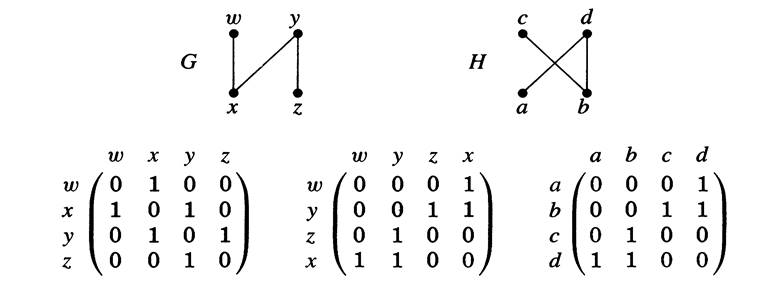

تاريخ الرياضيات

الاعداد و نظريتها

تاريخ التحليل

تار يخ الجبر

الهندسة و التبلوجي


الرياضيات في الحضارات المختلفة

العربية

اليونانية

البابلية

الصينية

المايا

المصرية

الهندية


الرياضيات المتقطعة

المنطق

اسس الرياضيات

فلسفة الرياضيات

مواضيع عامة في المنطق


الجبر

الجبر الخطي

الجبر المجرد

الجبر البولياني

مواضيع عامة في الجبر

الضبابية

نظرية المجموعات

نظرية الزمر

نظرية الحلقات والحقول

نظرية الاعداد

نظرية الفئات

حساب المتجهات

المتتاليات-المتسلسلات

المصفوفات و نظريتها

المثلثات


الهندسة

الهندسة المستوية

الهندسة غير المستوية

مواضيع عامة في الهندسة

التفاضل و التكامل


المعادلات التفاضلية و التكاملية

معادلات تفاضلية

معادلات تكاملية

مواضيع عامة في المعادلات


التحليل

التحليل العددي

التحليل العقدي

التحليل الدالي

مواضيع عامة في التحليل

التحليل الحقيقي

التبلوجيا

نظرية الالعاب

الاحتمالات و الاحصاء

نظرية التحكم

بحوث العمليات

نظرية الكم

الشفرات

الرياضيات التطبيقية

نظريات ومبرهنات


علماء الرياضيات

500AD

500-1499

1000to1499

1500to1599

1600to1649

1650to1699

1700to1749

1750to1779

1780to1799

1800to1819

1820to1829

1830to1839

1840to1849

1850to1859

1860to1864

1865to1869

1870to1874

1875to1879

1880to1884

1885to1889

1890to1894

1895to1899

1900to1904

1905to1909

1910to1914

1915to1919

1920to1924

1925to1929

1930to1939

1940to the present

علماء الرياضيات

الرياضيات في العلوم الاخرى

بحوث و اطاريح جامعية

هل تعلم

طرائق التدريس

الرياضيات العامة

نظرية البيان
MATRICES AND ISOMORPHISM
المؤلف:
Douglas B. West
المصدر:
Introduction to Graph Theory Second Edition
الجزء والصفحة:
6-8
6-8-2016
2245
How do we specify a graph? We can list the vertices and edges (with end points), but there are other useful representations. Saying that a graph is loop less means that multiple edges are allowed but loops are not.
Definition.
Let G be a loop less graph with vertex set V (G) = {V1, . . . , vn } and edge set E(G) = {e1, ..., em}. The adjacency matrix of G, written A(G), is the-n-by-n matrix in which entry ai,j is the number of edges in G with endpoints {Vi, Vj}. The incidence matrix M(G) is the n-by-m matrix in which entry mi,j is 1 if Vi is an, endpoint of ej and otherwise is O. If vertex V is an endpoint of edge e, then V and e are incident. The degree of vertex V (in a loop less graph) is the number of incident edges.
1.1. Remark.
An adjacency matrix is determined by a vertex ordering. Every adjacency matrix is symmetric (ai,j = aj,i for all i, j). An adjacency matrix
of a simple graph G has entries 0 or 1, with Os on the diagonal. The degree of v is the sum of the entries in the row for v in either A(G) or M(G). .
1.2. Example.
For the loop less graph G below, we exhibit the adjacency matrix and incidence matrix that result from the vertex ordering w, x, y, z and
the edge ordering a, b, c, d, e. The degree of y is 4, by viewing the graph or by summing the row for. y in either matrix.

Presenting an adjacency matrix for a graph implicitly names the vertices by the order of the rows; the ith vertex corresponds to the ith row and column. Storing a graph in a computer requires naming. the vertices. Nevertheless, we want to study properties (like connectedness) that do not depend on these names. Intuitively, the structural properties of G and H will be the same if we can rename the vertices of G using the vertices in H so that G will actually become H. We make the definition precise for simple graphs. The renaming is a function from V(G) to V(H) that assigns each element of V(H) to one element of V(G), thus pairing them up. Such a function is a one-to-one correspondence or bijection (see Appendix A). Saying that the renaming turns G into H is saying that the vertex bijection preserves the adjacency relation.
1.3. Definition.
An isomorphism from a simple graph G to a simple graph H is a bijection f: V(G)→ V(H) such that uv ϵE(G) if and only if (u)f(v) ϵ E(H). We say "G is-isomorphic to H", written G  H, if there is an isomorphism from G to H.
H, if there is an isomorphism from G to H.
1.4. Example.
The graphs G and H drawn below are 4-vertex paths. Definethe function f: V(G)→ V(H) by f(w) = a, f(x) = d, f(y) = b, f(z) = c. To show that f is an isomorphism, we check that f preserves edges and non- edges. Note that rewriting A(G) by placing the rows in the order w, y, z, x and the columns also in that order yields A(H), as illustrated below; this verifies that f is an isomorphism.
Another isomorphism maps w, x, y, z to c, b, d, a, respectively.

1.5. Remark.
Finding isomorphisms. As suggested in Example 1.4 pre- senting the adjacency matrices with vertices ordered so that the matrices are identical is one way to prove that two graphs are isomorphic. Applying a permutation a to both the rows and the columns of A(G) has the effect of reordering the vertices of G. If the new matrix equals A(H), then the permutation yields an isomorphism. One can also verify preservation of the adjacency relation without writing out the matrices. In order for an explicit vertex bijection to be an isomorphism from G to H, the image in H of a vertex v in G must behave in H as v does in G. For example, .they must have the same degree. .
Introduction to Graph Theory Second Edition, Douglas B. West , Indian Reprint, 2002,page(6.8)
 الاكثر قراءة في نظرية البيان
الاكثر قراءة في نظرية البيان
 اخر الاخبار
اخر الاخبار
اخبار العتبة العباسية المقدسة

الآخبار الصحية















 قسم الشؤون الفكرية يصدر كتاباً يوثق تاريخ السدانة في العتبة العباسية المقدسة
قسم الشؤون الفكرية يصدر كتاباً يوثق تاريخ السدانة في العتبة العباسية المقدسة "المهمة".. إصدار قصصي يوثّق القصص الفائزة في مسابقة فتوى الدفاع المقدسة للقصة القصيرة
"المهمة".. إصدار قصصي يوثّق القصص الفائزة في مسابقة فتوى الدفاع المقدسة للقصة القصيرة (نوافذ).. إصدار أدبي يوثق القصص الفائزة في مسابقة الإمام العسكري (عليه السلام)
(نوافذ).. إصدار أدبي يوثق القصص الفائزة في مسابقة الإمام العسكري (عليه السلام)


















